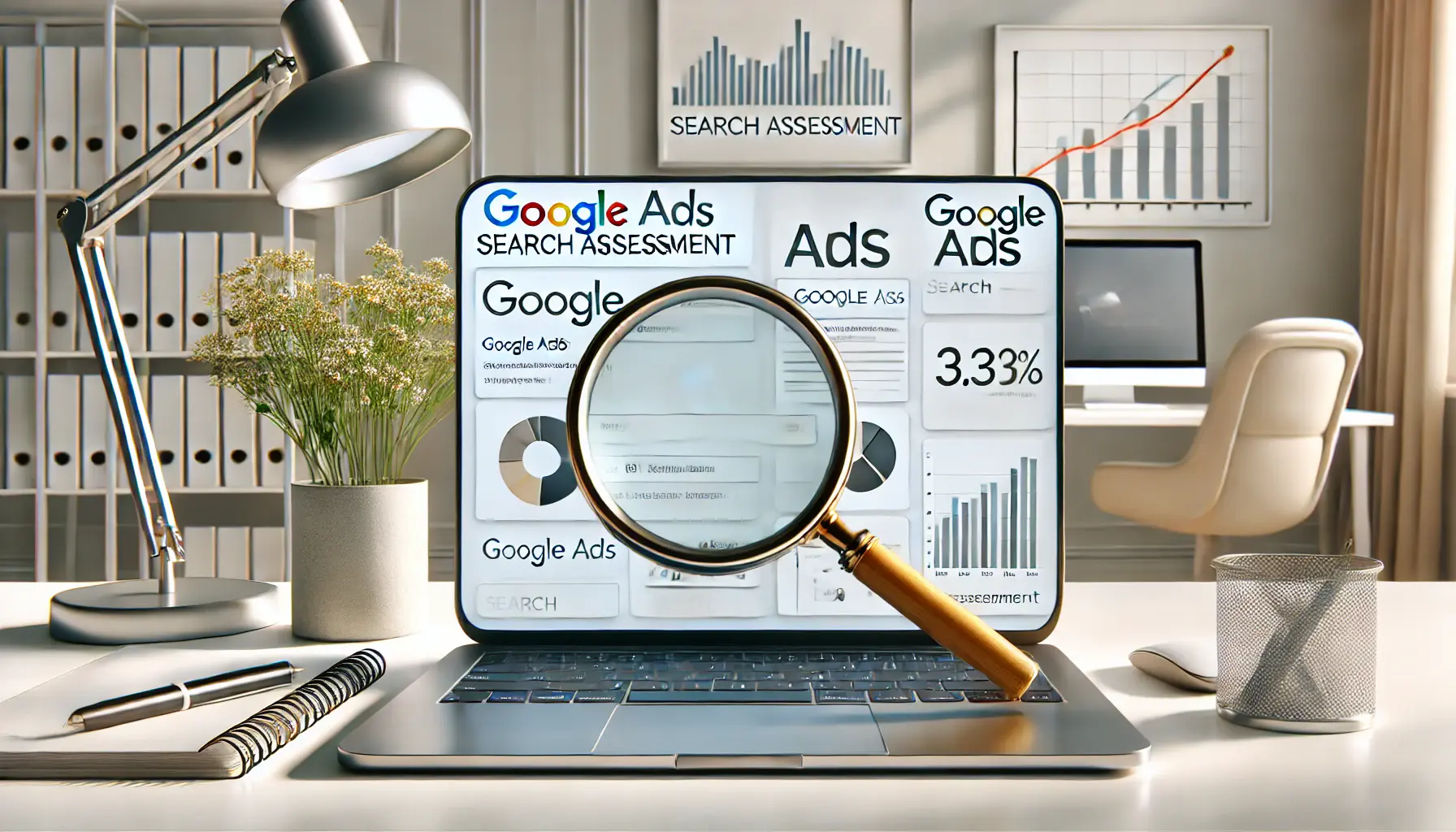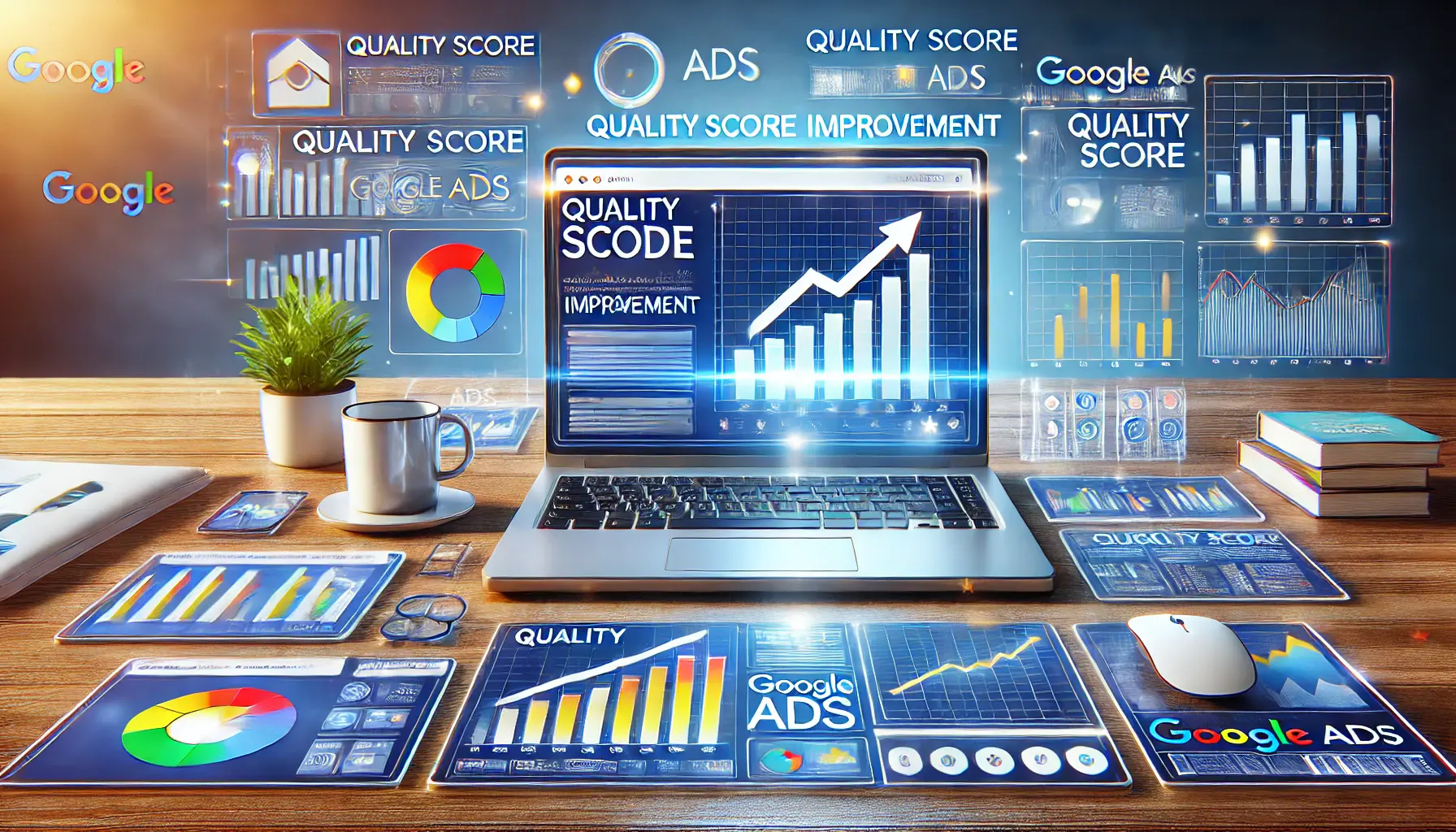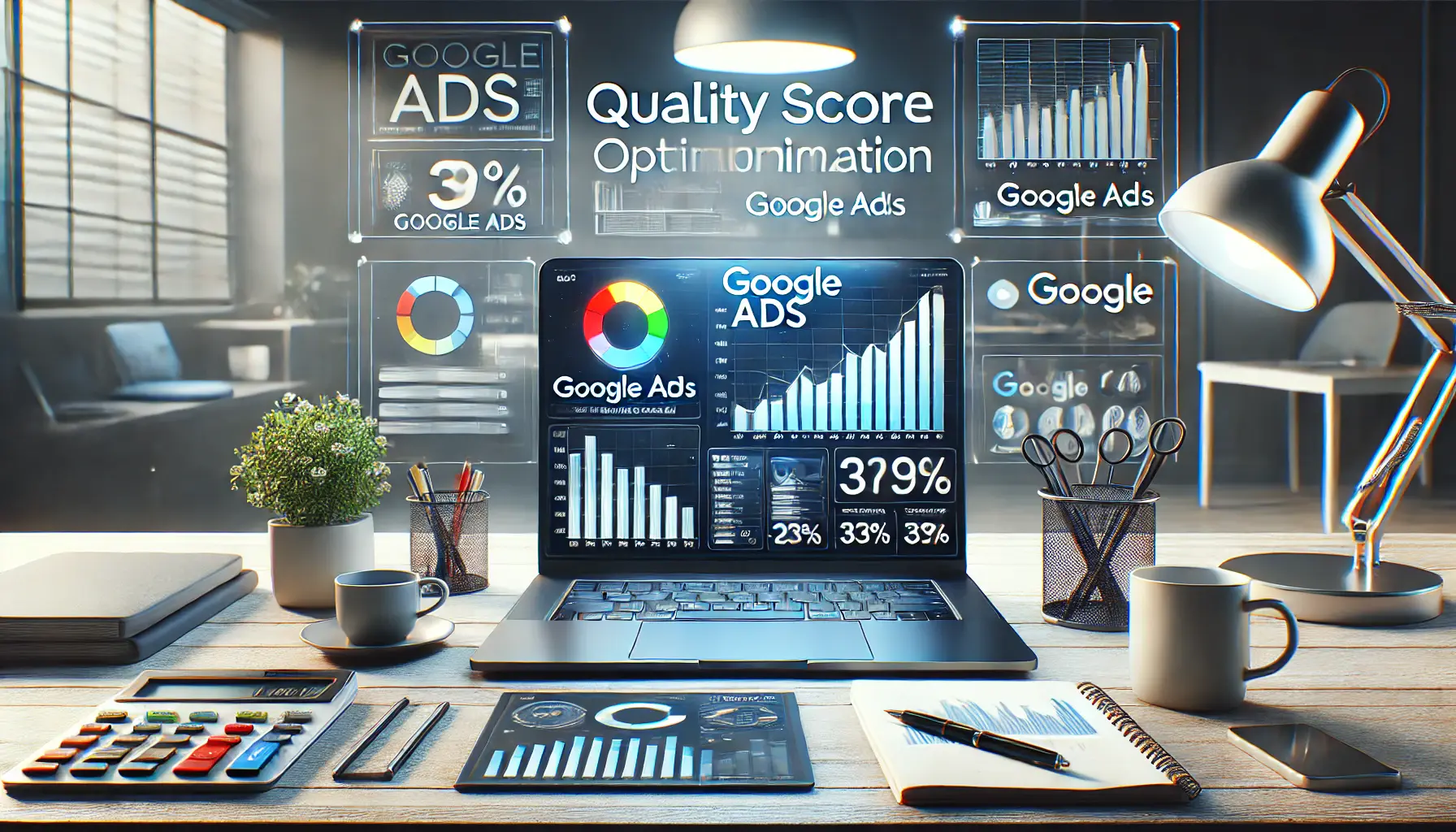In digital marketing, it is not only about the conversions; rather, the real battle is deciphering the quality and impact these conversions have on the success of your campaigns.
Do you know the number of conversions you are receiving via Google Ads?
Have you stopped to think about the quality of those conversions?
Or is it just vanity metricsSuperficial metrics that look impressive but do not directly contribute to business goals. on some report?
Conversion quality in Google Ads all comes down to knowing the value of each and every conversion in relation to the overall campaign goals.
It isn’t about getting people to click or to sign up; it’s about making sure those clicks or sign-ups translate into meaningful outcomes, like increased sales, repeat customers, or long-term growth.
In this post, we are going to discuss how conversion quality assessment works in Google Ads, why it is important, and how you can optimize your campaigns for high-quality conversions that will truly make a difference.
Not every conversion is created equal, and some leads will result in a sale right off the bat, while others might disappear after a simple like or comment.
Knowing the difference is crucial to maximize your ad spend and truly see if your marketing efforts are working.
- What is Conversion Quality?
- Measuring Conversion Quality: Key Metrics
- Optimizing Google Ads for Higher Conversion Quality
- Tools and Techniques for Assessing Conversion Quality
- Common Mistakes That Lower Conversion Quality in Google Ads
- Key Takeaways for Maximizing Conversion Quality in Google Ads
- FAQs of Conversion Quality in Google Ads
What is Conversion Quality?
Conversion quality refers to the overall effectiveness of the conversions your campaigns drive at actually producing meaningful outcomes.
A high-value conversion is one that aligns closely with your business objectives: increase revenue, acquire loyal customers, or improve your return on investment.
Low-quality conversions may look good on paper but do little to help your bottom line.
Suppose you had an e-commerce store; a quality conversion could be when a customer made not just one purchase but returned for more.
A low-quality conversion might be someone who signed up for a newsletter but never engaged with your brand again.
While both actions are considered ‘conversions,’ only one of them provides tangible value.
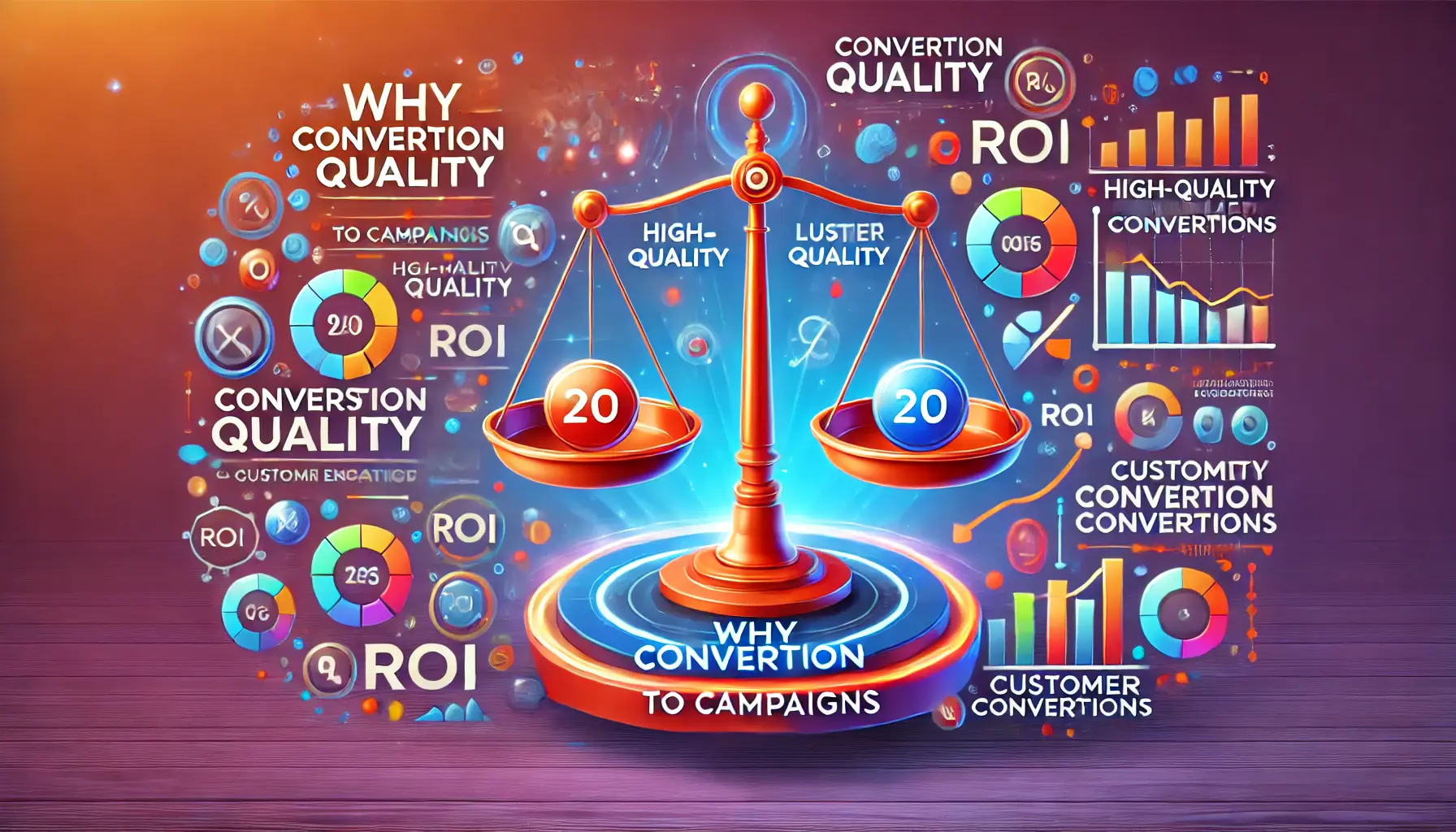
Why Conversion Quality Matters to Campaigns
Why Conversion Quality Matters to Campaigns
Conversion quality matters because it’s directly linked to the profitability of your campaigns.
Without measuring conversion quality, you might be spending your budget on ads that get clicks but little else.
This way, you’ll be in a better position to make more informed decisions on where your advertising dollar is best spent to resonate better with your target audience, driving better ROI for the business.
- Higher ROI: High-quality conversions lead to a higher return on your investment. This is because these conversions are more likely to turn into loyal customers or repeat sales.
- Improved Ad Efficiency: Emphasizing conversion quality directs you toward determining which element of your campaign genuinely serves its purpose. This helps you optimize your budget distribution accordingly.
- Stronger Customer Relationships: High-quality conversions usually involve more engaged customers, promising stronger customer relationships and long-term success.
These factors provide insights beyond just the number of conversions by delving deeper into customer behavior and engagement.
The key metrics you’ll want to keep an eye on include:
- Customer Lifetime Value (CLV): This metric measures the overall value a customer brings over the lifetime of their relationship with your business.
- Conversion Rate: While conversion rate itself is important, tracking the rate of repeat conversions gives you insight into lead quality.
- Post-Click Engagement: Understanding what users do after they convert—such as repeat purchases or further engagement with your brand—provides insights into conversion quality.
Your understanding and integration of these metrics into your Google Ads strategy will help you optimize your campaigns for higher-quality conversions, ultimately improving your overall performance.
Focusing on conversion quality ensures that your Google Ads campaigns deliver valuable outcomes, not just high numbers of conversions.

Measuring Conversion Quality: Key Metrics
Measuring Conversion Quality: Key Metrics
Measuring the quality of conversions is necessary to contextualize how your campaigns are truly performing in Google Ads beyond basic conversion rates.
It is easy to focus on the number of conversions, but that number alone does not reveal the value those conversions bring to your business.
By embedding key metrics, you can begin to get a clearer picture of conversion quality, enabling you to optimize your campaigns for better performance and return on investment.

Click-Through Rate (CTR) and Its Impact on Quality
Click-Through Rate (CTR) and Its Impact on Quality
CTR is one of the simplest and most powerful metrics when it comes to assessing conversion quality.
A high CTR indicates that users find your ad relevant and interesting enough to click on, but this does not necessarily mean high-quality conversions.
It’s important to ensure that the clicks you’re driving come from potential customers who will engage further and convert.
If your CTR is high and your conversion rate is low, this may indicate that your ad is attracting clicks from the wrong audience or that your landing page isn’t aligned with user expectations.
- Relevance: The more relevant your ad is, the better your targeting will be, but it’s crucial to reach the right audience, not just a broad one.
- Ad Messaging: The messaging in your ad needs to be compelling, but it should also clearly state what users can expect after clicking through.
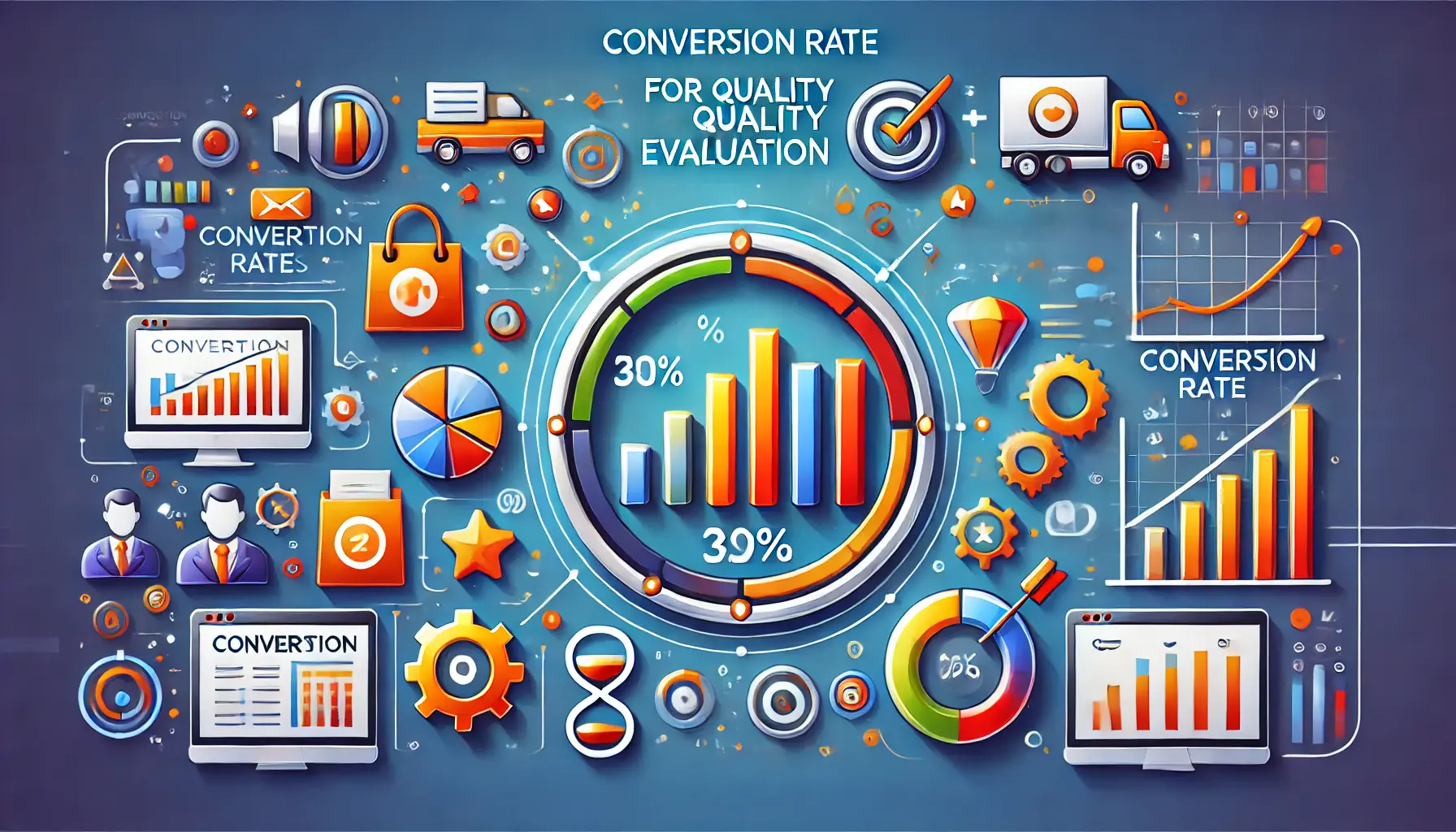
Conversion Rate for Quality Evaluation
Conversion Rate for Quality Evaluation
Your conversion rate directly indicates how well your Google Ads campaigns turn clicks into customer actions.
A high conversion rate generally signifies that your target audience is engaging with your content and moving through the sales funnel.
However, as with CTR, it’s not just about quantity—it’s about the quality of those conversions.
A high conversion rate from low-quality leads won’t help your bottom line.
Instead, aim to improve both conversion rate and conversion quality.
- Landing Page Optimization: Refine your landing page to offer users a seamless experience that responds to the ad’s intent and fulfills its promise.
- Audience Segmentation: Use Google Ads’ advanced targeting capabilities to reach users most likely to convert into valuable customers for your business.
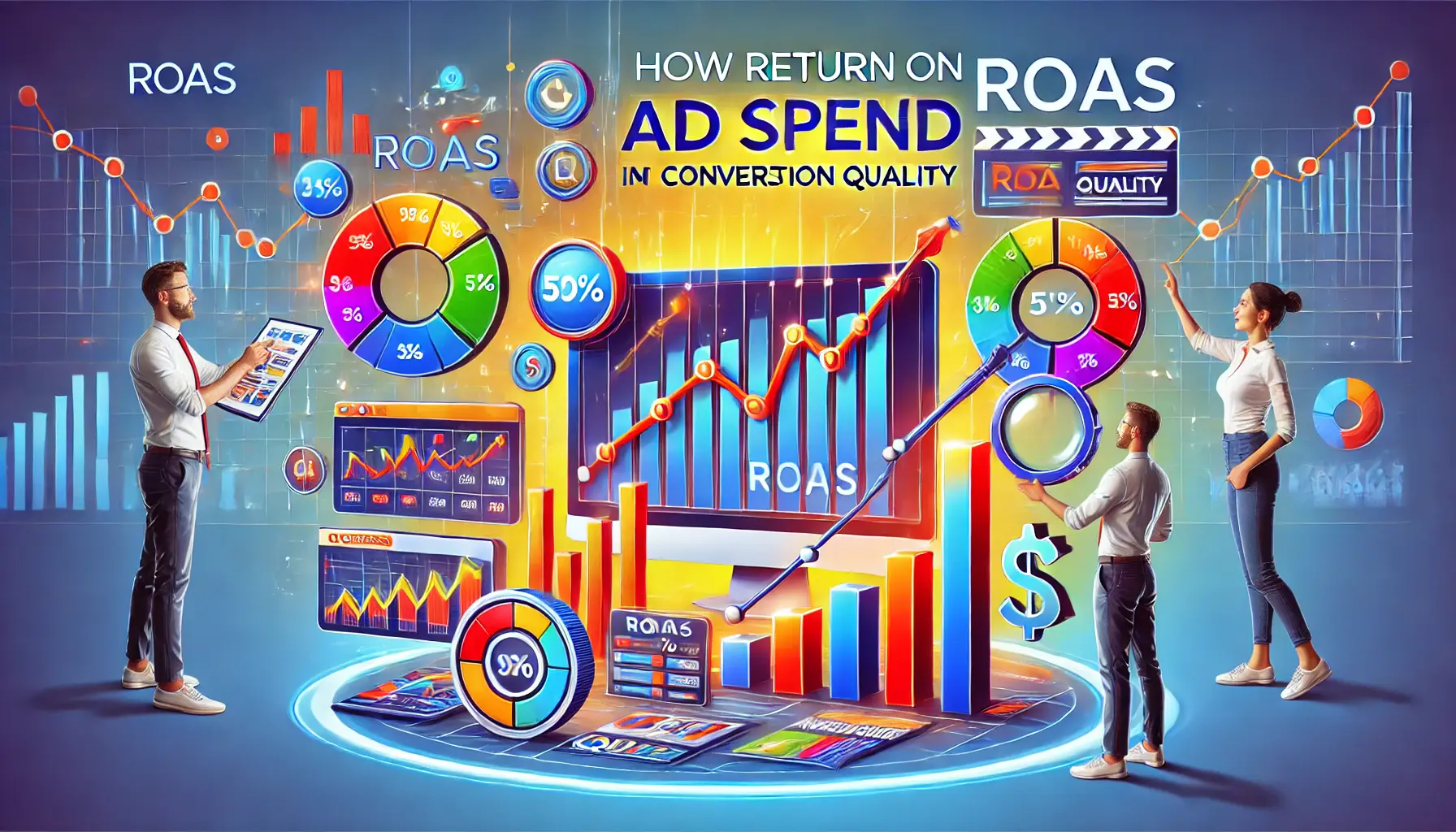
How Return on Ad Spend (ROAS) Impacts Conversion Quality
How Return on Ad Spend (ROAS) Impacts Conversion Quality
Return on Ad Spend (ROAS) is a critical metric that closely ties into conversion quality.
ROAS measures the revenue generated for every dollar spent on advertising, providing insight into the financial success of your campaigns.
High-quality conversions contribute to higher ROAS because these conversions are more likely to lead to profitable customer relationships.
For example, if you run an expensive campaign that generates many conversions but little revenue, your ROAS will be low.
Focusing on conversion quality helps ensure that the conversions you generate are worth the investment, improving your overall ROAS.
- Revenue Focus: Focus on high-value conversions from customers who make repeat purchases or invest in premium products or services.
- Campaign Refinement: Continuously assess and refine your campaigns to eliminate ad spend on low-quality leads.
By closely monitoring these key metrics, you will gain a deeper understanding of your Google Ads performance, ensuring meaningful, high-quality conversions that drive long-term business growth.
Measuring conversion quality with metrics like CLV and post-click engagementThe actions users take after clicking on an ad, such as making a purchase or exploring the website further. helps optimize campaigns for meaningful results.
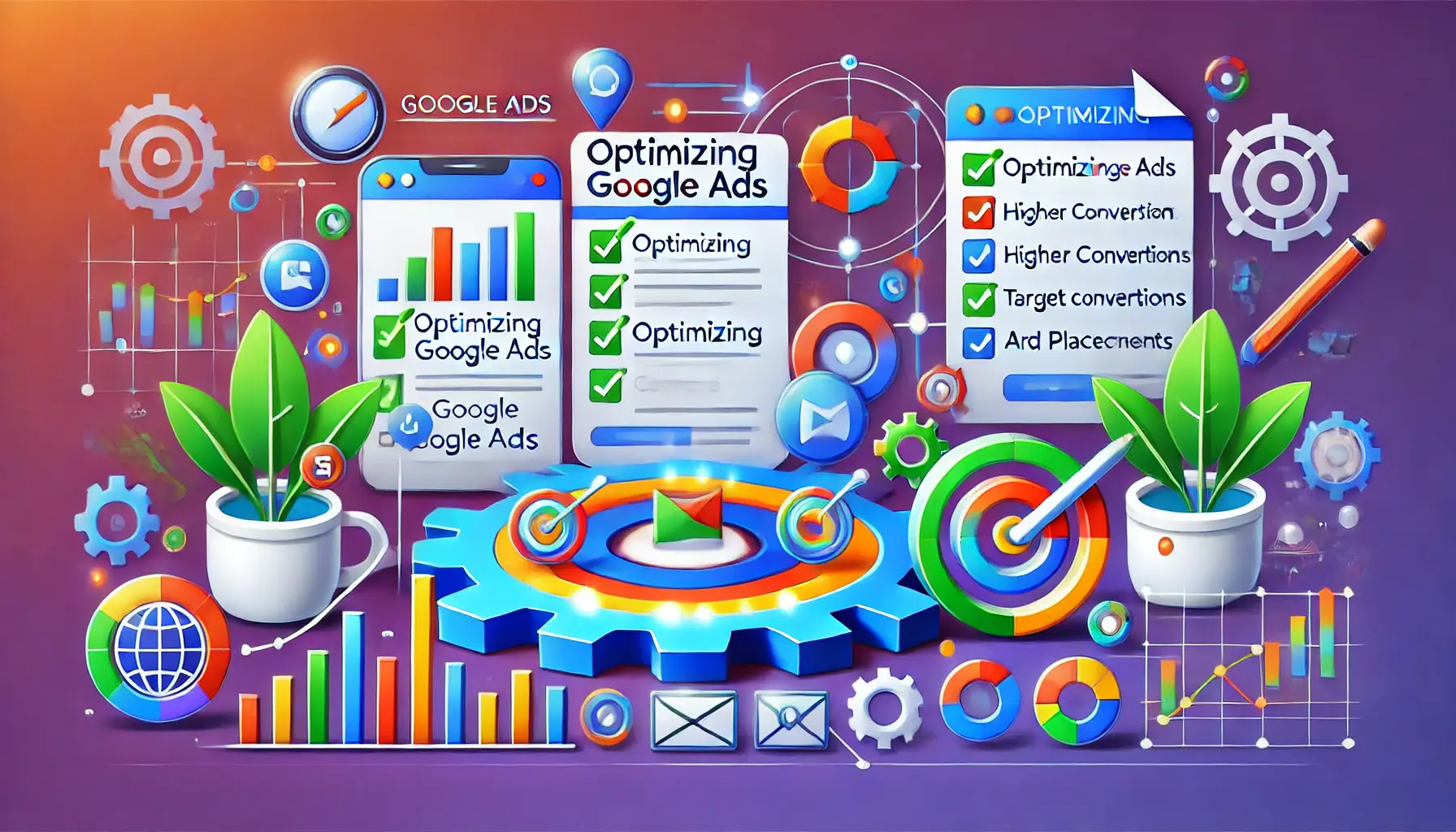
Optimizing Google Ads for Higher Conversion Quality
Optimizing Google Ads for Higher Conversion Quality
Optimizing your Google Ads campaign for better conversion quality requires driving more than just traffic to your website.
It’s about ensuring that the traffic you attract consists of high-quality leads who are likely to convert into customers and retain with your company.
This can be achieved by refining various aspects of your ads and overall approach, significantly improving the quality of conversions and ensuring a better return on investment (ROI) and long-term growth for your business.
These include the following:
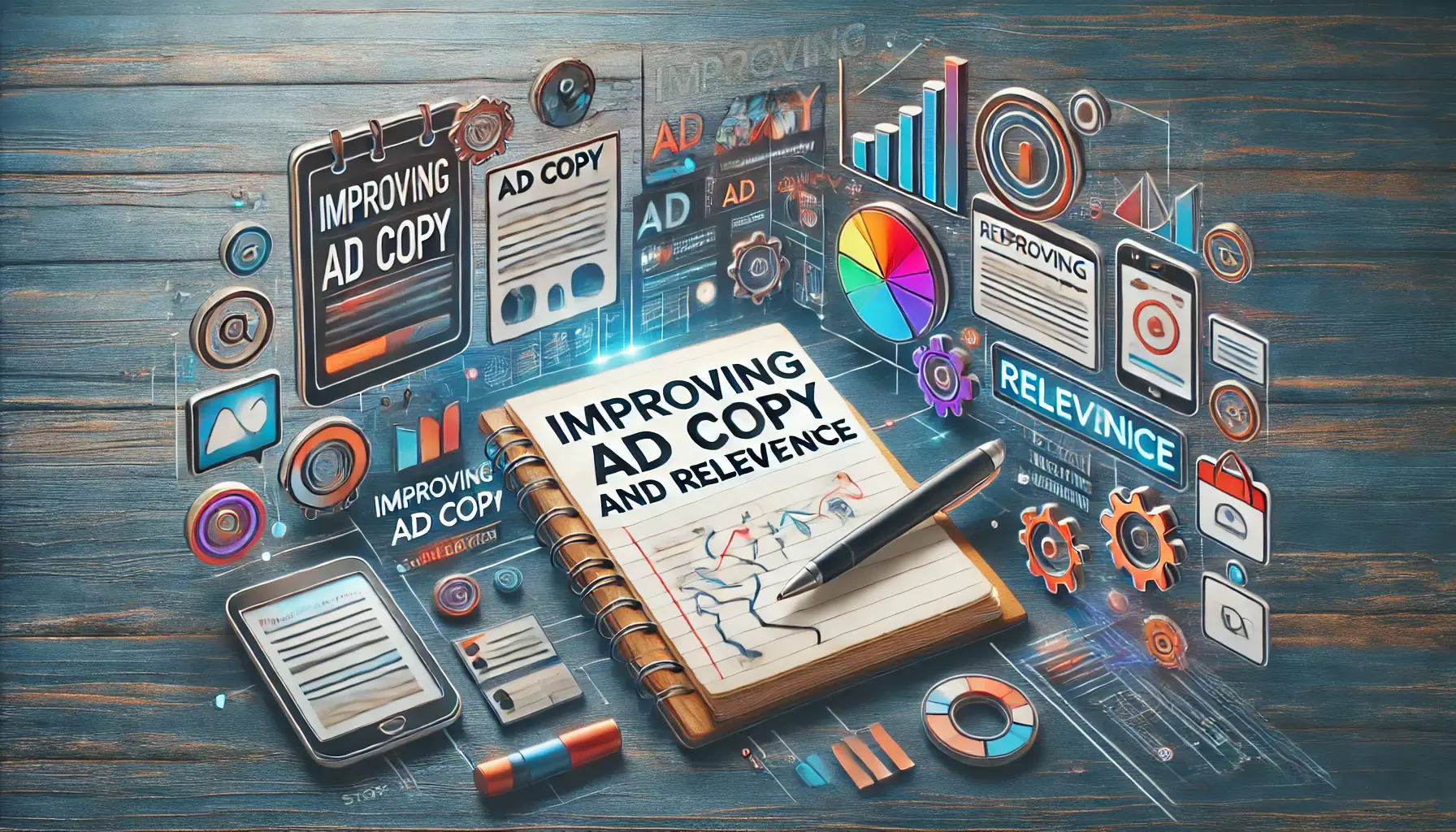
Improving Ad Copy and Relevance
Improving Ad Copy and Relevance
The first step in optimizing Google Ads for conversion quality involves enhancing ad copy and relevance.
Your ad copy should be tailored to address the needs and pain points of your target audience.
Top-notch ad copy will be creative, clear, and to the point, with an emphasis on relevant keywords.
If your ad speaks to the right audience, the chances of achieving higher-quality conversions increase.
- Use Clear, Targeted Messaging: Ensure your ad copy precisely communicates to the needs of your target audience. This helps ensure that only potential customers click on your ad.
- Include Keywords Naturally: Naturally place your primary keywords in the ad copy to boost relevance and align with user search intent.
- Align Ad Copy with Landing Pages: The messaging in your ad should reflect on the landing page for a consistent user experience.

Targeting the Right Audience for Higher Quality Conversions
Targeting the Right Audience for Higher Quality Conversions
If the wrong people are seeing your ads, you may drive a large volume of clicks, but they won’t turn into meaningful outcomes.
Fine-tuning your audience targeting ensures that you’re reaching users most likely to convert into valuable customers.
- Utilize Google Ads Audience Segments: Google Ads includes advanced audience segmentation tools that allow you to target specific groups based on demographics, interests, and behaviors.
- Remarketing Campaigns: Use remarketing campaigns to target users who have interacted with your brand but didn’t convert. This can help you recapture interested prospects and lead to higher-quality conversions.
- Lookalike Audiences: Utilize lookalike audiences to target new users who resemble your current high-value customers.

Ad Placement Strategies for Boosting Conversion Quality
Ad Placement Strategies for Boosting Conversion Quality
Conversion quality heavily depends on ad placement.
Ads placed strategically on high-performing platforms or within relevant content are more likely to drive high-quality traffic.
You can further improve campaign performance by optimizing your ad placements to appear in front of users most likely to convert.
- Focus on High-Performing Platforms: Allocate a higher percentage of your ad budget to platforms that yield high-quality conversions.
- Optimize Ad Scheduling: Run your ads during optimal times and days when your target audience is most active and likely to convert.
- Use Negative Keywords: Negative keywords prevent your ad from showing to irrelevant traffic, reducing wasted clicks and improving conversion quality.
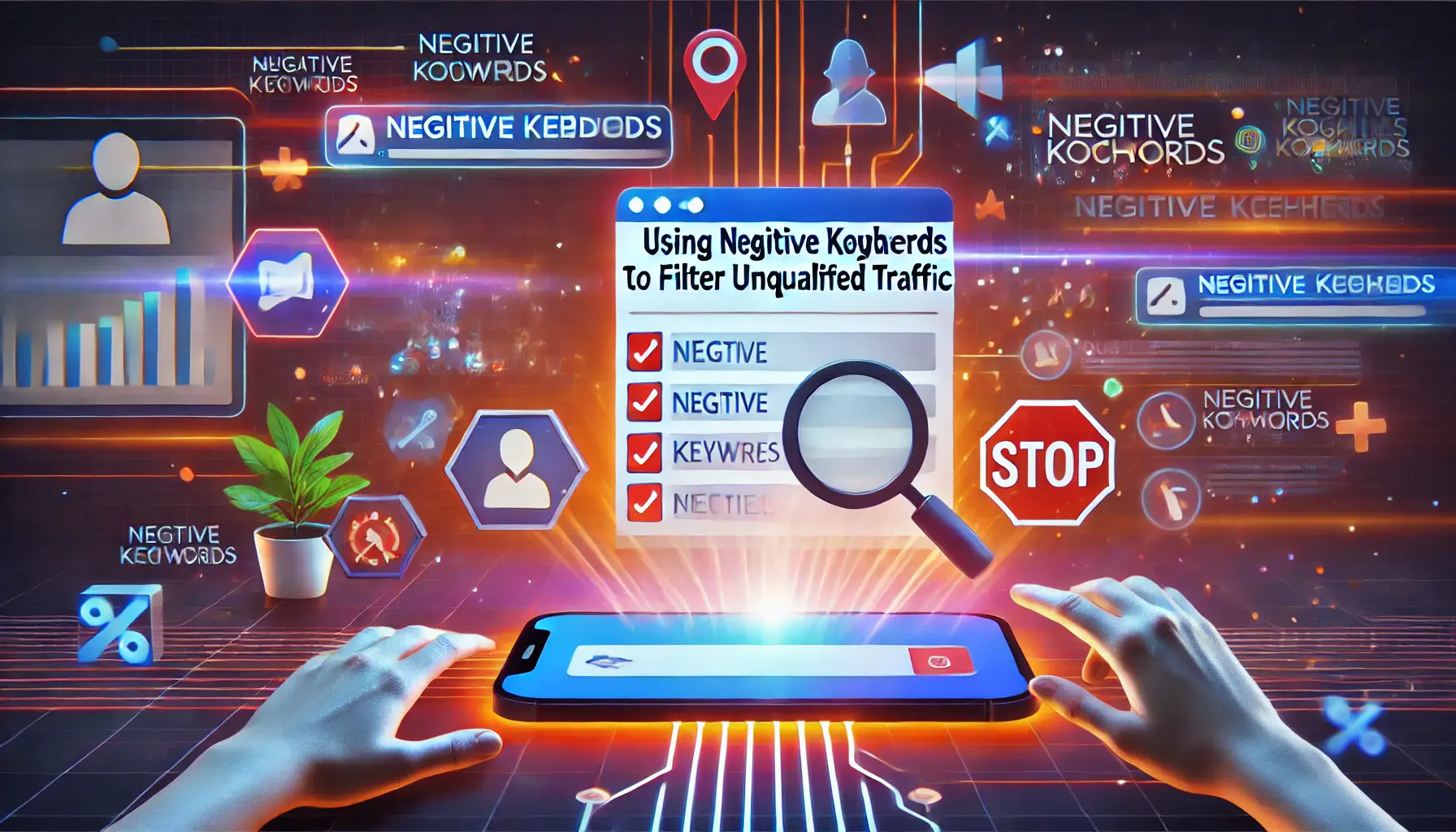
Using Negative Keywords to Filter Unqualified Traffic
Using Negative Keywords to Filter Unqualified Traffic
Negative keywords are an effective way to fine-tune your audience targeting and improve conversion quality.
By excluding irrelevant search terms from triggering your ads, you can avoid unqualified traffic clicking on your ads, helping focus your ad spend on users more likely to convert.
This not only drives higher-quality leads but also ensures a better ROI for your campaigns.
- Identify Irrelevant Search Terms: Regularly analyze your search query reports to identify search terms that are irrelevant to your business and add them to your negative keyword list.
- Refine Your Negative Keyword List: Continuously update your negative keyword list to ensure you’re filtering out traffic that doesn’t align with your conversion goals.
By implementing these strategies, you’ll have your Google Ads optimized to focus on high-quality leads, improving your overall conversion quality and driving more meaningful business results.
Refining ad copy, targeting the right audience, and optimizing ad placements are key to improving conversion quality.

Tools and Techniques for Assessing Conversion Quality
Tools and Techniques for Assessing Conversion Quality
With any Google Ads campaign, assessing conversion quality requires the use of several tools and techniques.
These tools help you track ad performance and give you a deeper understanding of the value of the conversions you’re generating.
By leveraging these technologies, you can better understand how well your ads are performing and make informed decisions to optimize conversion quality.
Google Ads Conversion Tracking: Setup and Usage
Google Ads Conversion Tracking: Setup and Usage
Google Ads provides built-in conversion tracking tools that allow you to monitor user actions after they interact with your ads.
By setting up conversion tracking, you’ll be able to measure the quality of your conversions and receive detailed data about actions such as purchases, sign-ups, and form submissions.
- Conversion Action Setup: Install the Google Ads conversion tracking tag on your website to start tracking actions that matter most to your business.
- Custom Conversion Goals: Set specific conversion goals—such as sales, leads, or downloads—to ensure the conversions you’re tracking align with your business objectives.
- Real-Time Data: Google Ads provides real-time data, enabling you to understand how well your campaigns are performing and make necessary adjustments quickly.

Utilizing Google Analytics for Deeper Insights
Utilizing Google Analytics for Deeper Insights
Integrating Google Analytics with Google Ads lets you see detailed user behavior beyond the initial conversion, allowing you to measure the total value of those conversions.
- Behavior Flow Analysis: Analyze how users interact with your site after clicking on your ad to better understand conversion quality.
- Enhanced E-commerce Tracking: For e-commerce sites, enhanced e-commerce tracking provides valuable insights into product performance, checkout behavior, and repeat purchases, all of which help assess conversion quality.
- Goal Tracking: Set custom goals in Google Analytics to track whether users are completing desired actions, such as filling out forms or visiting key pages.
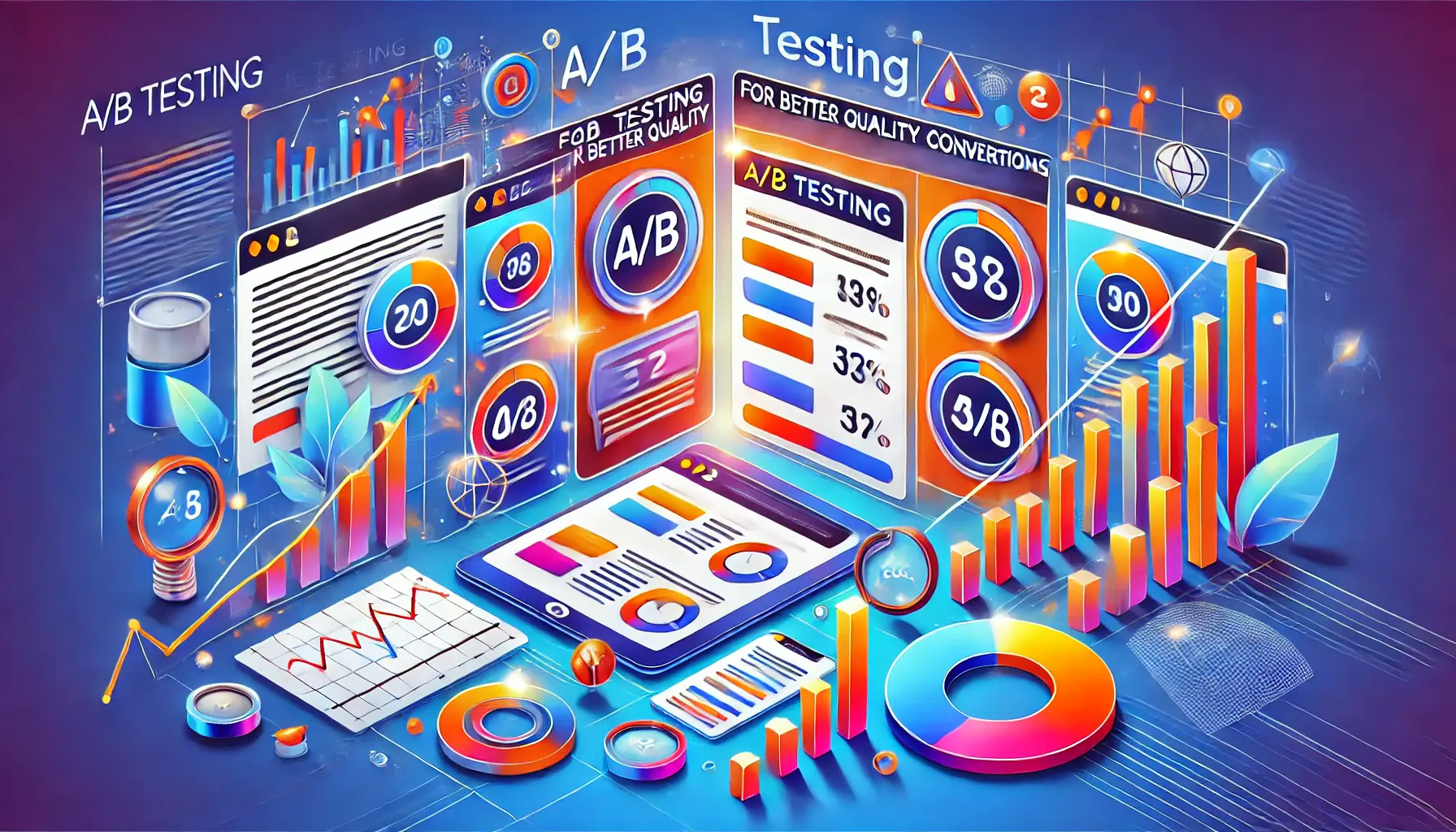
A/B Testing for Better Quality Conversions
A/B Testing for Better Quality Conversions
A/B testing is a powerful technique for improving conversion quality by comparing different variations of your ads, landing pages, or other campaign elements.
Testing variables such as headlines, images, or CTAs helps you identify which version yields higher-quality conversions.
- Test Ad Copy Variations: Compare different ad copy versions to see which resonates better with your target audience and leads to higher-quality conversions.
- Optimize Landing Pages: Test various layouts, designs, and messaging on your landing pages to determine which version results in better conversion quality.
- Measure Impact: Use Google Ads’ native A/B testing tools or third-party platforms to measure the impact of each test and make data-driven decisions to improve conversion quality.

Third-Party Tools for Conversion Quality Analysis
Third-Party Tools for Conversion Quality Analysis
In addition to native Google tools, several third-party platforms offer more advanced features and deeper insights into customer behavior and campaign performance.
- Hotjar: Provides heatmaps and session recordings to show how users interact with your site post-conversion, highlighting areas for improvement.
- Crazy Egg: Creates visual reports on user behavior, allowing you to see where users are clicking and how they navigate your site after engaging with your ad.
- Mixpanel: Offers in-depth event tracking and user behavior analysis, giving you insights into the actions users take after they convert.
By applying these tools and techniques, you will gain a better understanding of your conversion quality, allowing you to make smarter decisions to optimize your Google Ads campaigns.
Tracking the right metrics, testing variables, and leveraging advanced analytics will help you optimize for higher-quality conversions that drive real business results.
Leveraging tools like Google Analytics and A/B testingA method of comparing two versions of a webpage, ad, or email to see which one performs better. can provide deeper insights into conversion quality and performance.
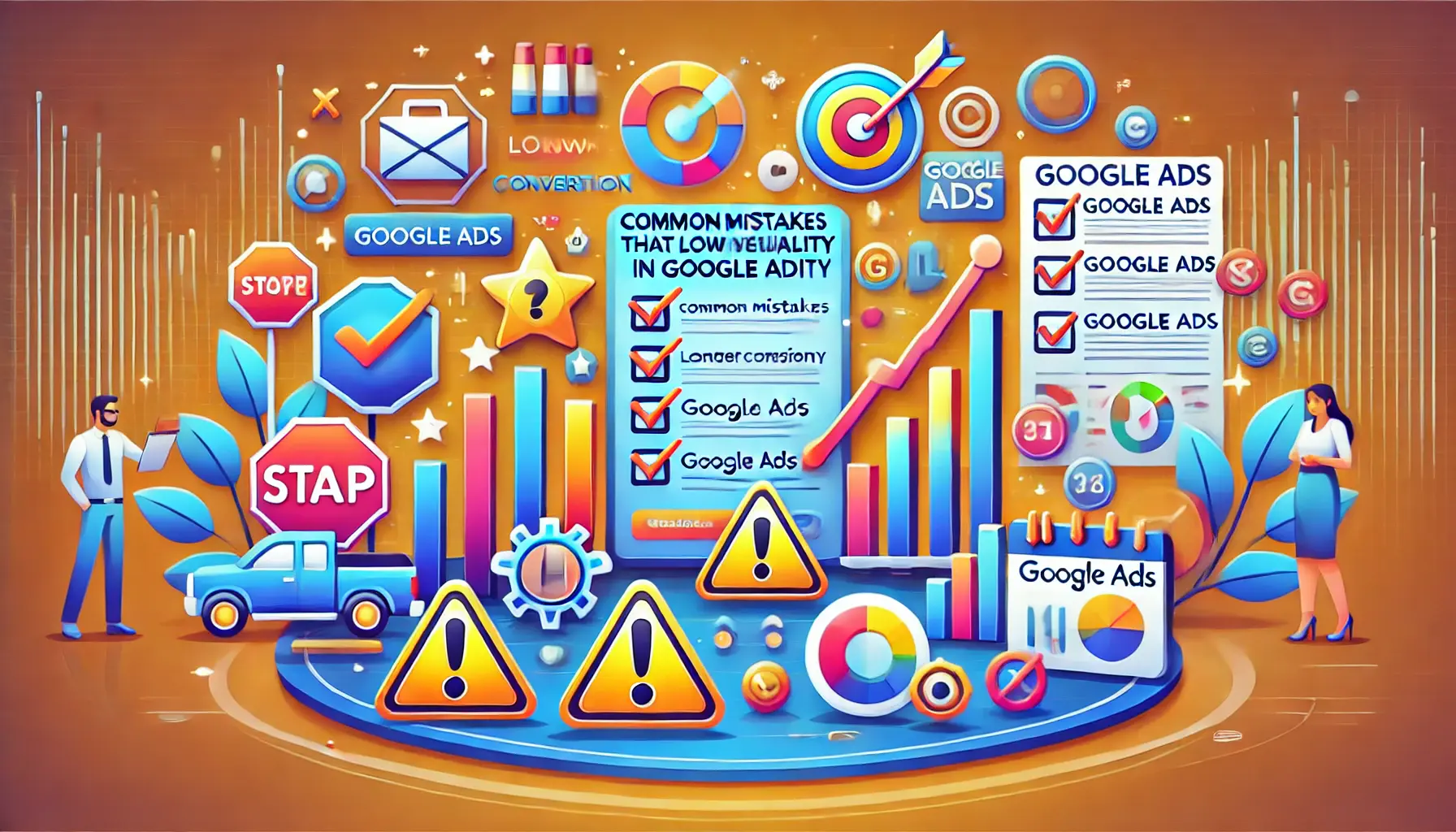
Common Mistakes That Lower Conversion Quality in Google Ads
Common Mistakes That Lower Conversion Quality in Google Ads
Even with the best strategies, common mistakes that can lower the quality of your conversions in Google Ads still exist.
These errors reduce the effectiveness of your campaigns and waste ad spend on low-quality traffic.
Identifying and avoiding them is key to enhancing your conversion quality and ensuring your marketing efforts yield better results.
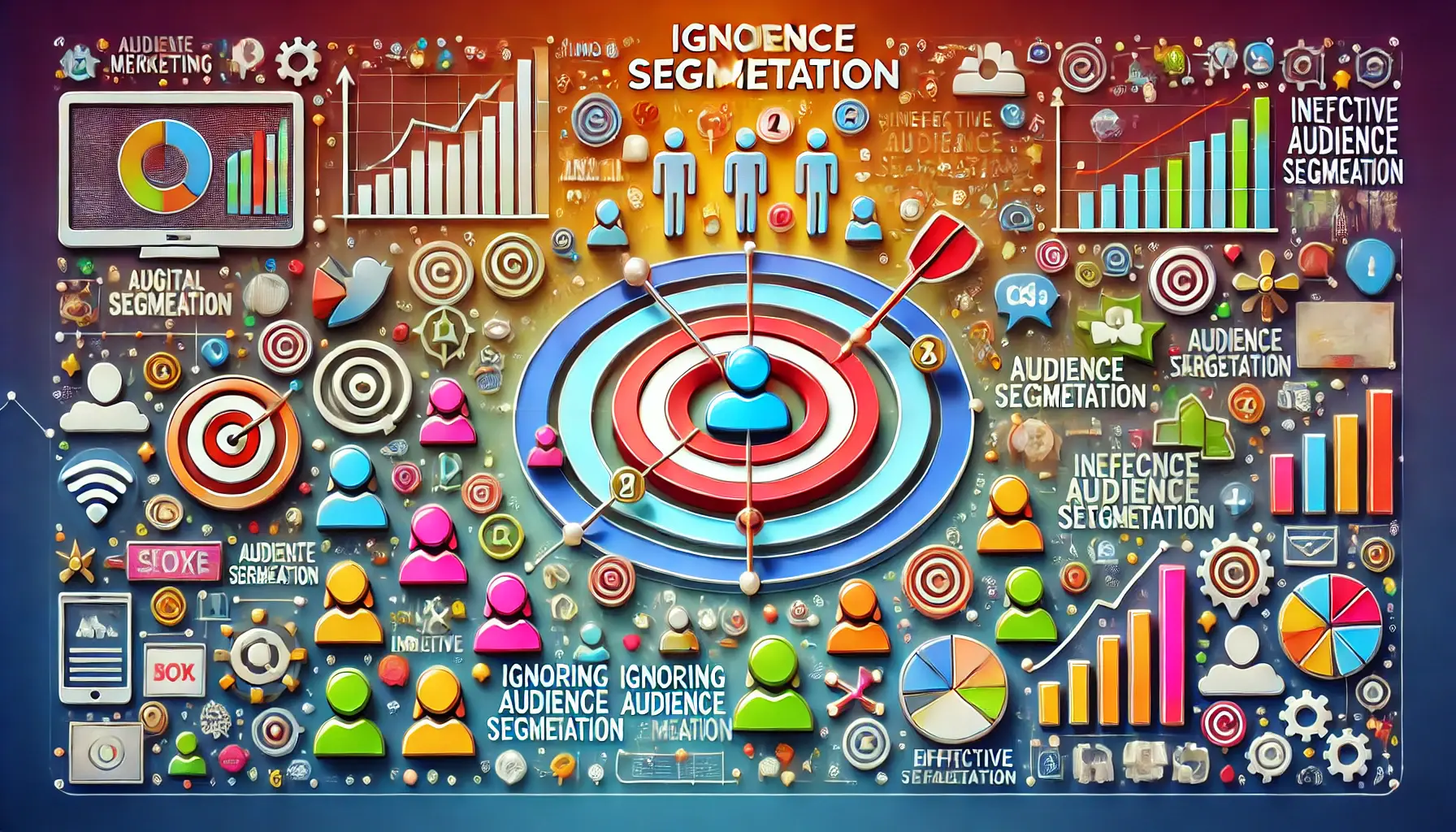
Ignoring Audience Segmentation
Ignoring Audience Segmentation
One common mistake in Google Ads is failing to segment your audience effectively.
Audience segmentation allows you to serve targeted ads to specific groups of users based on demographics, interests, and behaviors.
Without proper segmentation, your ads will reach a broad audience, which may include users who are unlikely to convert into valuable customers.
This leads to irrelevant clicks and low-quality conversions.
- Solution: Segment your target audience using Google Ads audience segmentation tools to ensure high-intent users see your ads and convert.
- Personalized Messaging: Tailor your ad copy to each audience segment to increase the likelihood of high-quality conversions.
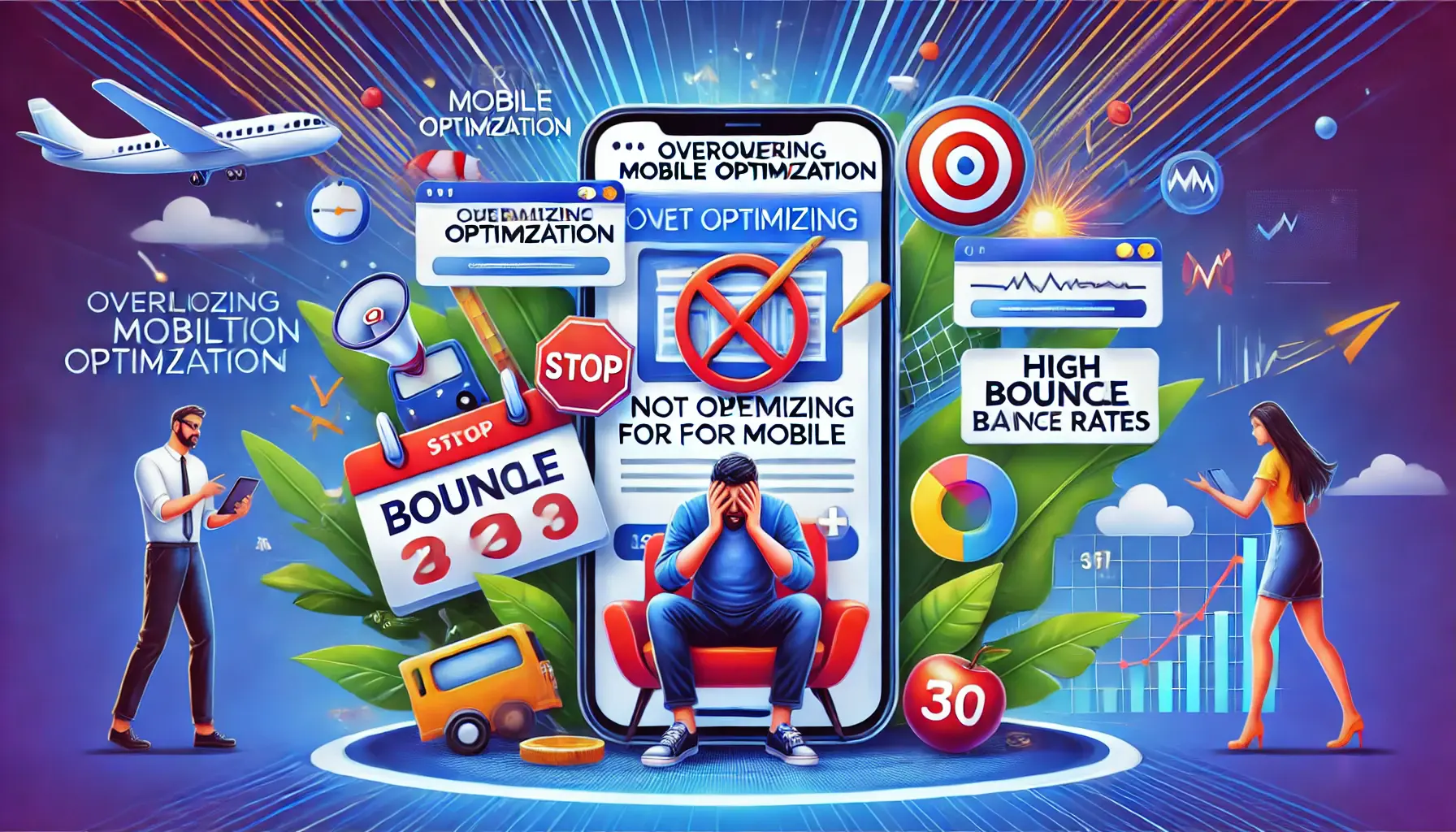
Overlooking Mobile Optimization
Overlooking Mobile Optimization
A poor mobile experience can result in high bounce rates, low engagement, and poor conversion quality.
Given the rise in mobile traffic, optimizing for mobile users is crucial to improving conversion quality.
- Solution: Ensure your landing pages and ads are mobile-friendly by using responsive designs and optimizing for fast load times.
- Mobile-Specific Ads: Create mobile-specific ad campaigns that address the unique behaviors and needs of mobile users to drive better-quality conversions.

Focusing Only on Quantity Over Quality
Focusing Only on Quantity Over Quality
Many advertisers fall into the trap of focusing solely on the number of conversions instead of their quality.
While high conversion numbers may look impressive, low-quality conversions that don’t contribute to your bottom line are ultimately a waste of resources.
- Solution: Shift your focus to conversion quality by considering key performance metrics such as Customer Lifetime Value (CLV) and Return on Ad Spend (ROAS).
- Refine Targeting: Regularly review and refine your targeting strategies to capture high-quality leads that are more likely to result in meaningful conversions.
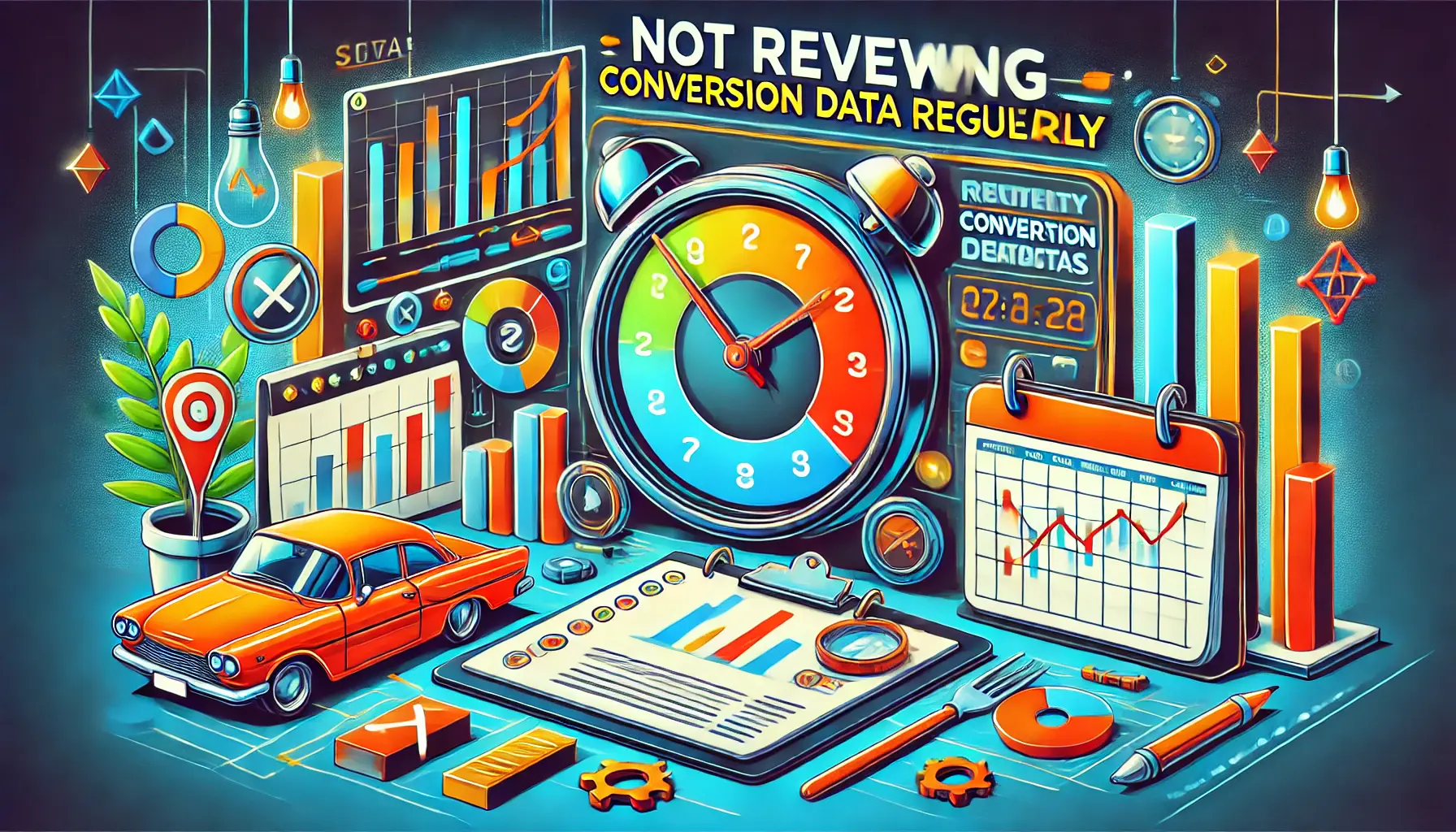
Not Reviewing Conversion Data Regularly
Not Reviewing Conversion Data Regularly
Another common mistake that decreases the quality of your conversions is failing to regularly review conversion data.
Without monitoring key metrics and performance data, you may miss opportunities to optimize your campaigns and improve conversion quality.
- Solution: Schedule regular reviews of your Google Ads conversion data to identify areas for improvement.
- Data-Driven Optimization: Use the insights gained from your conversion data to make informed decisions that enhance the quality of your campaigns.
By avoiding these common mistakes and implementing the solutions mentioned above, you can significantly improve your Google Ads conversion quality.
Ensuring that your campaigns are well-targeted, mobile-optimized, and regularly reviewed will lead to better-quality conversions, a higher return on investment, and more meaningful results for your business.
Avoid neglecting audience segmentation and mobile optimization, as these can significantly lower conversion quality.
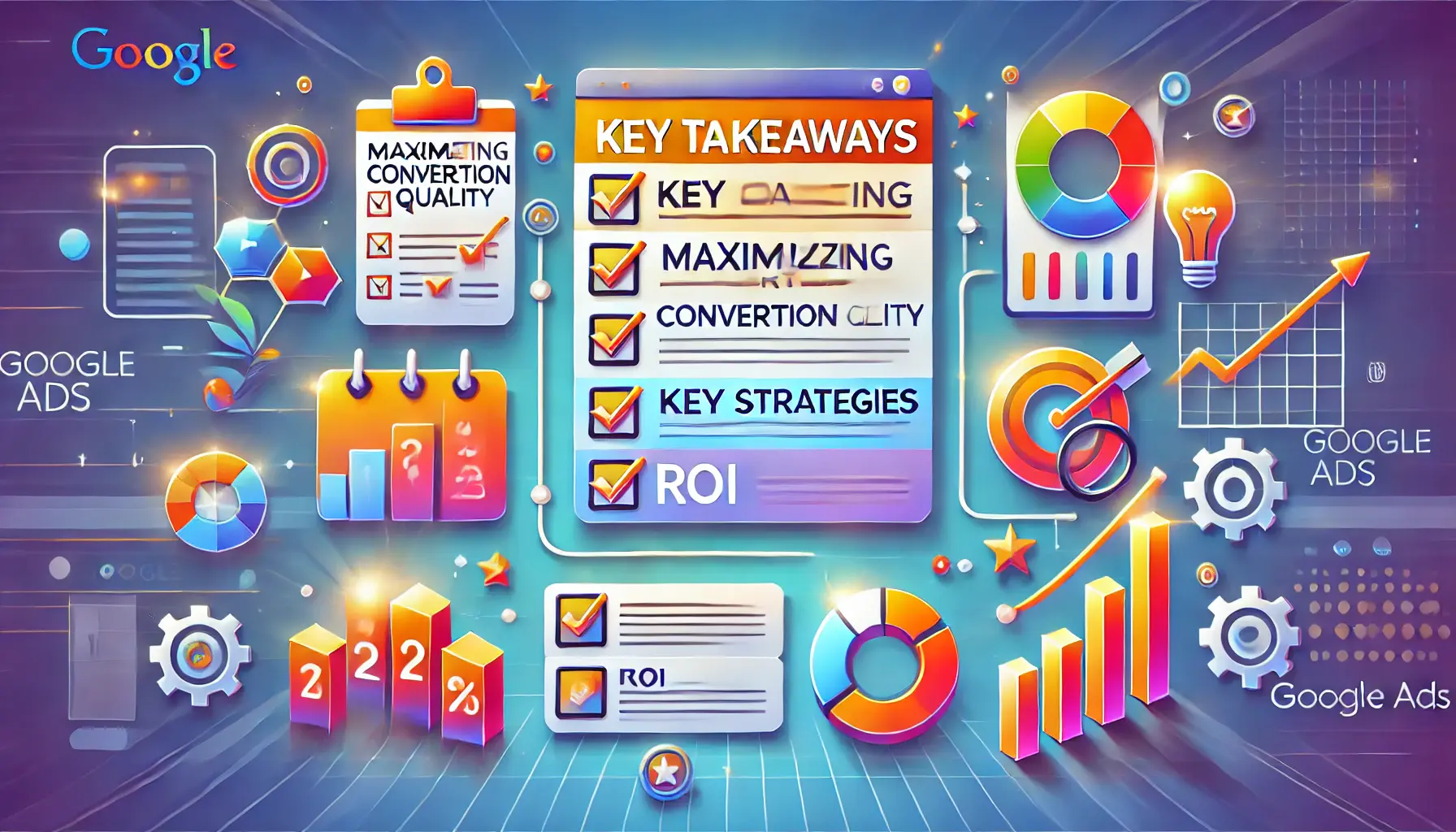
Key Takeaways for Maximizing Conversion Quality in Google Ads
Key Takeaways for Maximizing Conversion Quality in Google Ads
Optimizing conversion quality in Google Ads ensures that campaigns deliver meaningful results, not just high numbers of low-quality conversions.
By focusing on better conversion quality, you build a stronger ROI, improved customer relationships, and long-term business growth.
Throughout this article, we have explored various strategies, tools, and common mistakes, all aimed at helping you make better assessments of the quality of conversions in your campaigns.
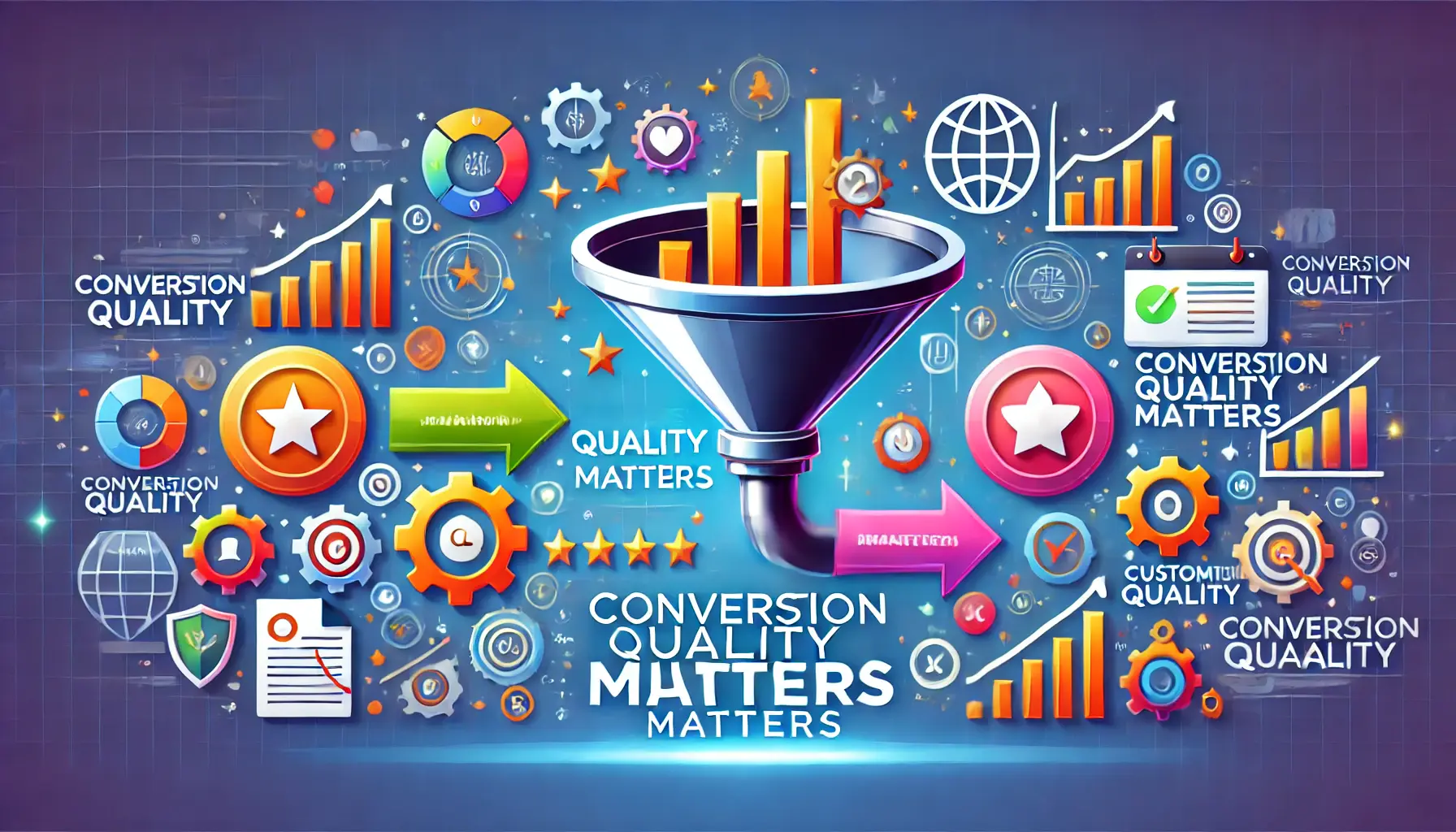
Conversion Quality Matters
Conversion Quality Matters
Conversion quality is not just about driving clicks or inflating numbers—it’s about ensuring those conversions bring real value to your business.
You can measure if your conversions are contributing to your bottom line by using key metrics such as Customer Lifetime ValueThe total revenue a business can expect from a single customer over their entire relationship. (CLV) and Return on Ad SpendA marketing metric that measures the revenue earned for each dollar spent on advertising. (ROAS).
High-value conversions are those that align with your business objectives, leading to better profitability and customer loyalty.
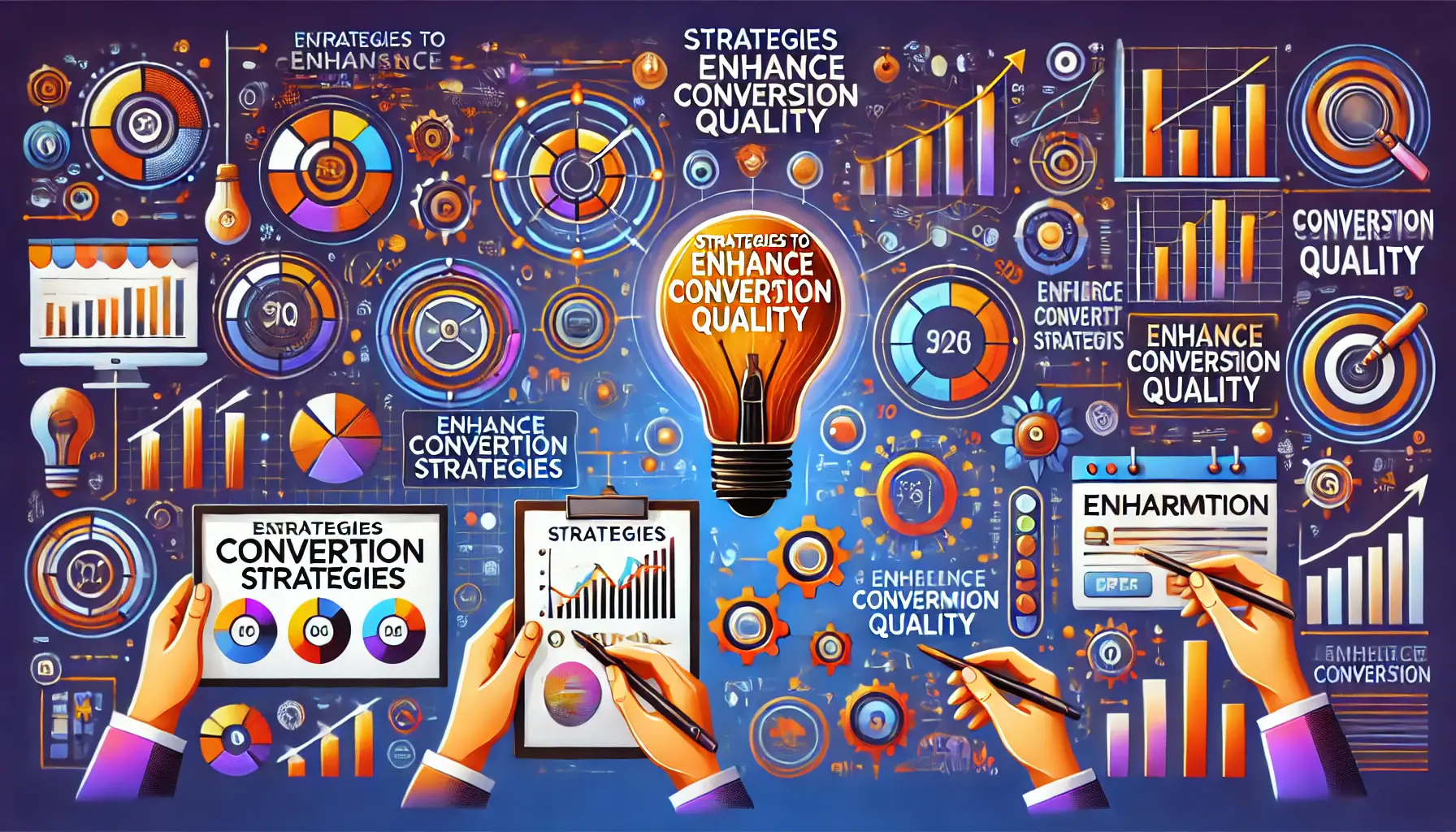
Strategies to Enhance Conversion Quality
Strategies to Enhance Conversion Quality
Several strategies can help improve the quality of your Google Ads conversions, from refining ad copy to optimizing audience targeting.
Key techniques include:
- Create Focused and Relevant Messaging: Ensure your ad copy resonates with your audience by aligning it with both keyword intent and user search behavior.
- Audience Segmentation: Use Google Ads’ audience segmentation tools to target specific groups of users based on demographics, interests, and behaviors. This ensures your ads reach high-intent users who are more likely to convert.
- Mobile Optimization: With more users browsing on mobile devices, ensure your landing pages and ads are mobile-friendly, creating a seamless user experience that boosts conversion quality.
Tools and Techniques for Better Conversion Tracking
Tools and Techniques for Better Conversion Tracking
Tools like Google Ads Conversion Tracking, Google Analytics, and third-party platforms like Hotjar and Crazy Egg provide real insights into user behavior, helping you optimize your campaigns.
Additionally, A/B testing can be used to compare different ad creatives or landing pages to determine which approach yields higher-quality conversions.

Common Mistakes to Avoid
Common Mistakes to Avoid
Several common mistakes can lower conversion quality, such as poor audience segmentation, neglecting mobile optimization, focusing solely on quantity over quality, and not reviewing conversion data regularly.
Avoiding these pitfalls will ensure your campaigns stay effective and aligned with your conversion goals.
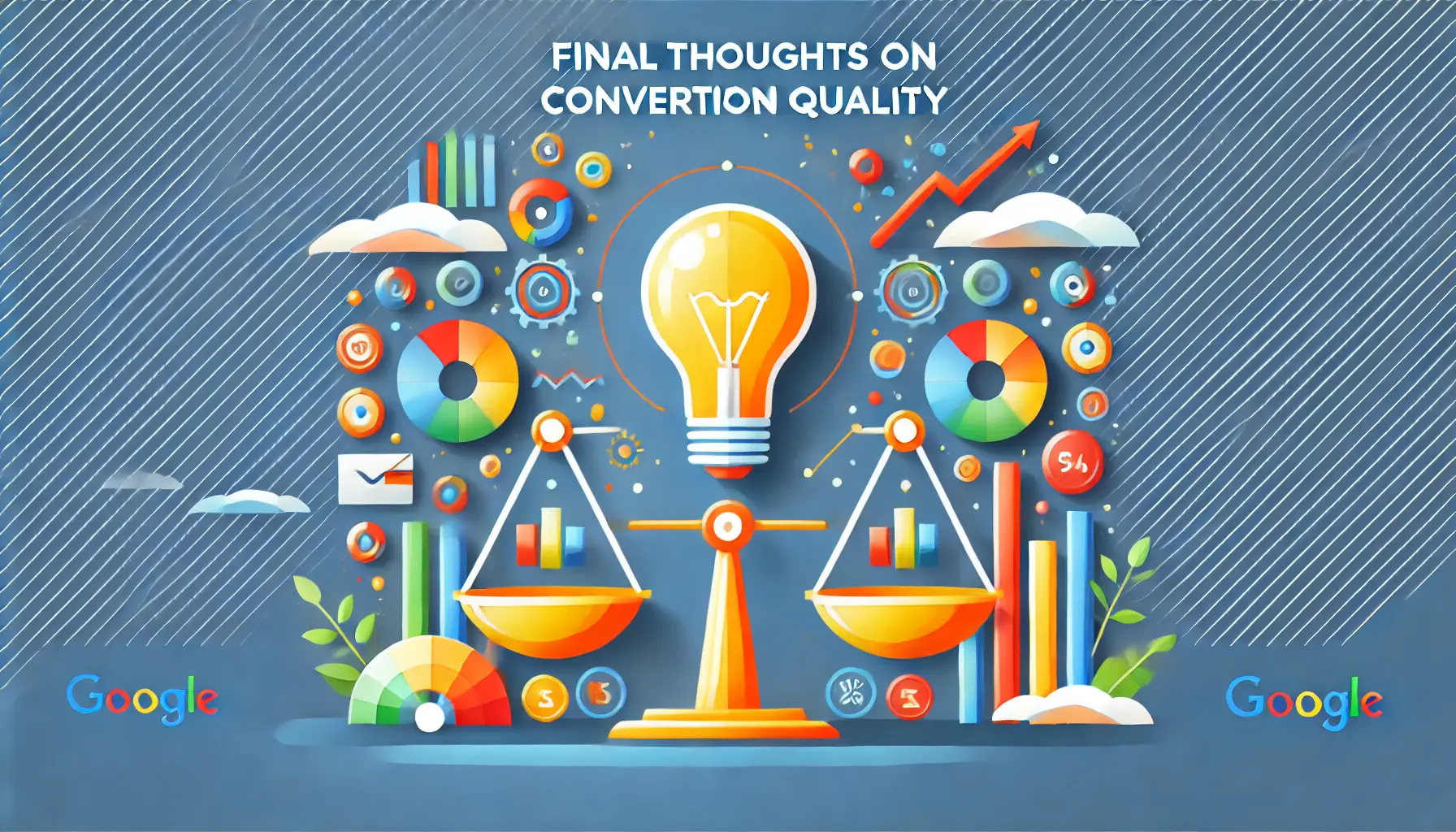
Final Thoughts on Conversion Quality in Google Ads
Final Thoughts on Conversion Quality in Google Ads
Maximizing conversion quality in Google Ads requires a combination of careful planning, ongoing analysis, and the use of advanced tools and techniques.
By applying the strategies outlined in this article, you’ll not only drive more conversions but also increase the value those conversions bring to your business.
Focus on targeting high-quality leads, optimize ad copy and targeting, and regularly review performance metrics to ensure continuous improvement.
These practices will help you build campaigns that contribute meaningfully to your bottom line and lead to long-term success for your business.
Focusing on conversion quality ensures long-term business growth, improved ROI, and stronger customer relationships.

FAQs of Conversion Quality in Google Ads
Your campaigns can be managed by an agency specialized in Google Ads, check out our service page.
FAQs of Conversion Quality in Google Ads
Here is a set of the most frequently asked questions about conversion quality in Google Ads—fully answered to help you gain a clear understanding of the concepts and apply them effectively in your campaigns.
Conversion quality in Google Ads refers to the value and effectiveness of the conversions your campaigns generate.
It focuses on meaningful actions, such as generating sales or retaining customers, that bring real value to your business.
Strategies to improve conversion quality include segmenting audiences, creating relevant ad copy, optimizing for mobile, and tracking key metrics such as Customer Lifetime Value (CLV) and Return on Ad Spend (ROAS).
Audience segmentation ensures your ads are shown to high-intent users who are more likely to convert into valuable customers.
This improves both ad relevance and overall conversion quality.
As more users browse on mobile, optimizing your landing pages and ads for mobile ensures a seamless experience, reduces bounce rates, and increases conversion quality by aligning with mobile user behavior.
Tools like Google Ads Conversion Tracking, Google Analytics, and third-party platforms like Hotjar and Crazy Egg provide detailed insights into user behavior, helping you effectively measure conversion quality.
Key metrics for assessing conversion quality include CLV, ROAS, and post-conversion engagement, all of which help determine how well your conversions are contributing to business outcomes.
A/B testing allows you to compare different versions of your ads or landing pages, helping you identify which approach leads to higher-quality conversions by focusing on factors like ad copy, images, and CTAs.
Regularly reviewing your Google Ads conversion data, at least weekly, is essential for identifying trends, optimizing performance, and improving conversion quality based on real-time insights and data-driven decisions.
Common mistakes include not segmenting your audience, neglecting mobile optimization, focusing on quantity over quality, and failing to regularly review conversion data, all of which can reduce conversion quality.





